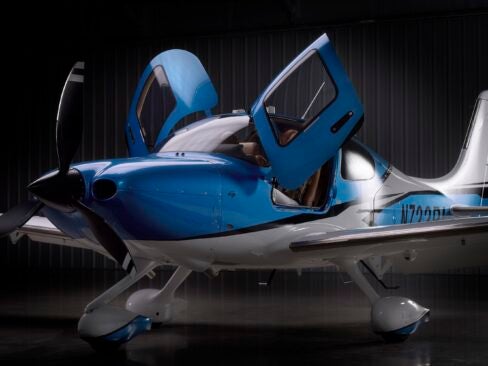Last year, Forbes Magazine identified the customization of private jets as one of eight important trends in the travel market. This will see the private jet market innovate further from the commercial sector, to deliver more meaningful spaces for the private traveler.
What will private jet interiors of the future be like? Ian Dryburgh, CEO of Acumen Design Associates, a leading aviation and transport design company, that created ‘The Residence’ for Etihad and the first flat-bed in the sky for British Airways, believes that the potential for customizing the luxury travel experience is more needed than ever.
Aviation design is marked by occasional huge leaps forward in design that are then replicated by airlines over time. One huge leap came in the late 1990s when British Airways rolled out the first fully flat beds in the sky. Over time every commercial airline caught up offering flat beds in first and then business class. Last year another huge leap took place. The Residence by Etihad offers a private three-room VIP suite in the sky, bringing the commercial experience something close to private aviation.
The challenge for the private jet industry is to react. To date, private jet innovation has been more about dressing the traditional cabin elements created by engineers rather than creating relevant and suitable spaces. This is about to change.
Traditional stereotypes about luxury and opulence are being eroded: the days of large leather chairs, walnut and cedar tables and gold trim are arguably old-hat. Luxury is evolving. In 2015, a private jet is as likely to be used by a sports franchise to transport elite athletes as it is a middle-aged businessman. Catering for the tastes of a market that is ever more diverse will be an important differentiator.
New wireless technologies and lighter components will quickly redefine private jets, where the opportunity to push boundaries is greater due to more permissive design freedoms compared to commercial aircraft. This will lead to more relevant and modern experiences for travelers. The discerning customer expects a certain level of sophistication from their yacht, car or hospitality interiors – and the brands that successfully deliver become benchmarks for quality and luxury. Jet interiors are the product of highly sophisticated engineering environments and to this end must strive to meet or exceed these benchmarks. Gone will be traditional aviation bulkheads and ceilings, replaced with functional spaces that are not recognizable as jet interiors.
Three recent concepts have been particularly impressive in demonstrating the potential to customize the private jet experience. Lufthansa Technik has been working with Mercedes Benz to develop such a concept. It provides independent spatial zones – beautifully integrated without walls, to provide working and rest areas independently.
Meanwhile, the Jet Aviation Basel Design Studio has produced a concept interior for the B787 showcasing a central lighting feature which segments the cabin and accentuates the interior flow, leading visually from one part of the cabin to the next.
Yasava, a Swiss interiors company has produced an “anti-gravitational human support structure”, the AÏANA® WAVE. This elegantly detailed chair has been designed with engineering principles of the human body and is controlled effortlessly by gravity rather than mechanics.
Private jets will become more optimized for the needs of passengers, reducing downtime for the individuals and brands that fly them and will deliver delight and surprise at every level. No-doubt there will always be a market for the more traditional interiors, yet as the market-place evolves the role of the designer is ever more relevant in creating a functional and elegant experience rather than re-hashing outdated preconceptions of luxury.









